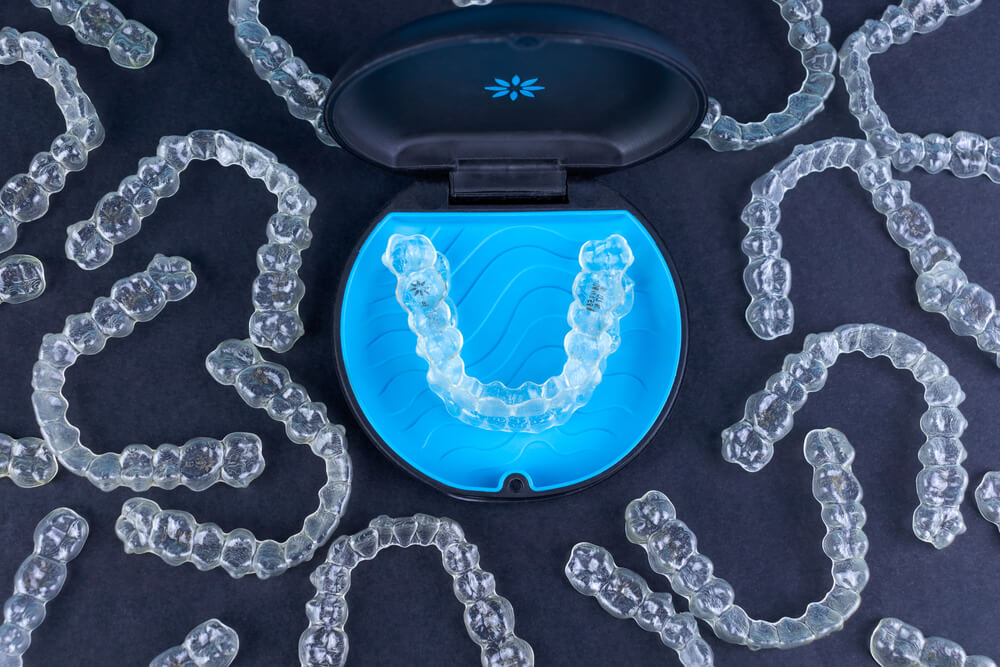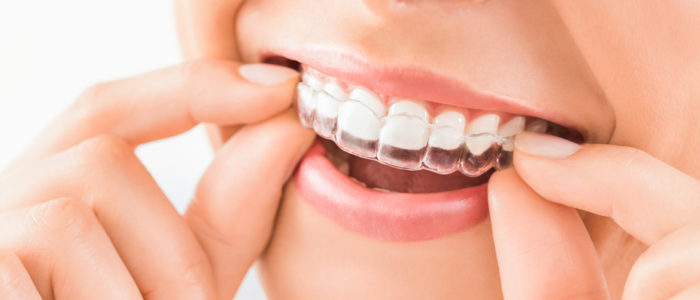How Does Invisalign Work?

Are you looking for a straighter smile without the bulky metal of traditional braces? You’ve likely come across Invisalign as an option.
Invisalign is an orthodontic treatment that gradually straightens teeth as a substitute for braces. Braces can be costly and difficult to maintain. Northside Dental Clinic in Springfield, MO, offers Invisalign as an alternative to braces, creating your custom trays and treatment plan.
Before you book a consultation, learn how Invisalign works to align your smile and what to expect from the process.
How Does Invisalign Work to Straighten Teeth?
Rather than orthodontists adjusting braces over time, you’ll receive Invisalign’s clear plastic aligner every few weeks.
After booking a consultation with your dentist, they’ll evaluate your smile and work with you to develop a treatment plan. If your dentist thinks you’re a good fit for Invisalign, you can expect to get your impressions done so your trays will be perfectly tailored to your teeth.
After your initial fitting, you will receive a new set of aligners every few weeks, depending on your goals and the severity of the correction required.
Your teeth move about 0.25 millimeters with each tray. Imagine a line on a piece of paper made with a fine-tip pen or sharpened pencil. That’s about how much your teeth move every two weeks.
Invisalign treatment is a gradual process that gradually moves teeth into their new position to prevent pain and allow your jaw to adjust.
What to Expect from Your Dental Consultation
Before making any corrections to your smile, it is recommended that you first discuss it with a dental provider. They will be able to determine whether Invisalign is a suitable solution for your teeth.
While many “take-home” services are available for dental aligners, a professional consultation is much safer and more effective. During the consultation, the dentist evaluates your overall oral health, including any underlying dental issues that may need to be addressed before starting Invisalign treatment.
The dentist can create a personalized treatment plan tailored to your specific dental needs and goals. They will consider factors such as the complexity of your case, bite alignment, and any previous dental work you may have done to ensure the best possible outcome with Invisalign.
Dental X-Rays & Photographs
Before Invisalign, your dentist takes x-rays and photographs of your teeth, examining them closely from multiple angles to determine the appropriate size and shape of your braces.
Our dental clinic uses advanced imaging technology, such as the lateral cephalometric X-ray, to obtain detailed images of your jaw and cheekbone relationship. This allows us to determine the exact shape of your final Invisalign tray with greater precision.
Preparing for Your Invisalign Tray
When preparing for your Invisalign tray, it may be necessary to create more space for your teeth to reposition and straighten. This can be achieved by using small discs to clear away some of the enamel, especially if your mouth is too crowded with teeth.
In some cases, composite patches may be required to help the tray grip your teeth. These patches are made from the same composite material that’s typically used for fillings. They are comfortable to wear and hardly noticeable.
What to Expect at Your First Fitting
After analyzing the photographs and x-rays, the dental office will create a mold that will fit your mouth perfectly. The Invisalign tray should feel snug but comfortable and not cause any pain. Your dentist will ensure that you try on different molds until the fit is perfect for your mouth.
Changes to Your Mouth After Invisalign
Adjusting to Invisalign trays is similar to braces. Most mild discomfort when brushing can be alleviated with toothpaste made for sensitive teeth.
How Long Does it Take for Invisalign to Work?
Invisalign treatments typically last 9-12 months, sometimes more, sometimes less. The timing depends on the patient. With less complex cases, you could see results as soon as six months.
To see results in day-to-day wear, you should wear your trays for at least 20 to 22 hours a day. You get a new set of Invisalign trays each time your teeth adjust to a pre-marked position. Each new alignment is considered a “new phase” in the treatment.
Northside Dental Clinic can analyze your smile in detail, forecast the length of treatment, and provide prognostications on potential outcomes.
What is Invisalign Made Of?
Invisalign utilizes clear, BPA-free plastic trays that you wear every day. These trays are invisible, and people hardly notice you’re wearing them.
Rather than metal braces that stay on your teeth for up to two years, we replace these trays over time to gently move your teeth into alignment. The tray’s plastic form is created from a 3D model of your mouth. When you look at the tray, it should appear as if you have a clear set of plastic teeth.
Invisalign vs. Braces: What’s the Difference?
Two of the most common options for straightening teeth are Invisalign and braces. Invisalign is a clear tray that fits over the teeth, while braces use metal brackets and wires.
The main advantage of Invisalign is that it is virtually invisible, making it a popular choice for adults and teens alike. In addition, It is removable, which means that it can be removed for eating, brushing, and flossing.
Braces are fixed in place and require more maintenance. The treatment length for Invisalign is shorter than that for braces, typically taking only a year, but it does come with a higher price tag than traditional braces.
Related Post: How Much Does Invisalign Cost?
Who Should Get Invisalign?
Both adults and teens can benefit from using Invisalign to correct misaligned teeth without the need for braces. This can help to avoid the potential embarrassment and self-consciousness that can come with traditional braces.
Invisalign in Springfield, MO
Invisalign can help you get a winning smile and much more. Straight teeth improve your bite, reduce jaw pain, make chewing more effortless, and prevent problems from occurring later in life. Contact Northside Dental Clinic or call (417) 862-2468 about Invisalign for teens or adults.

